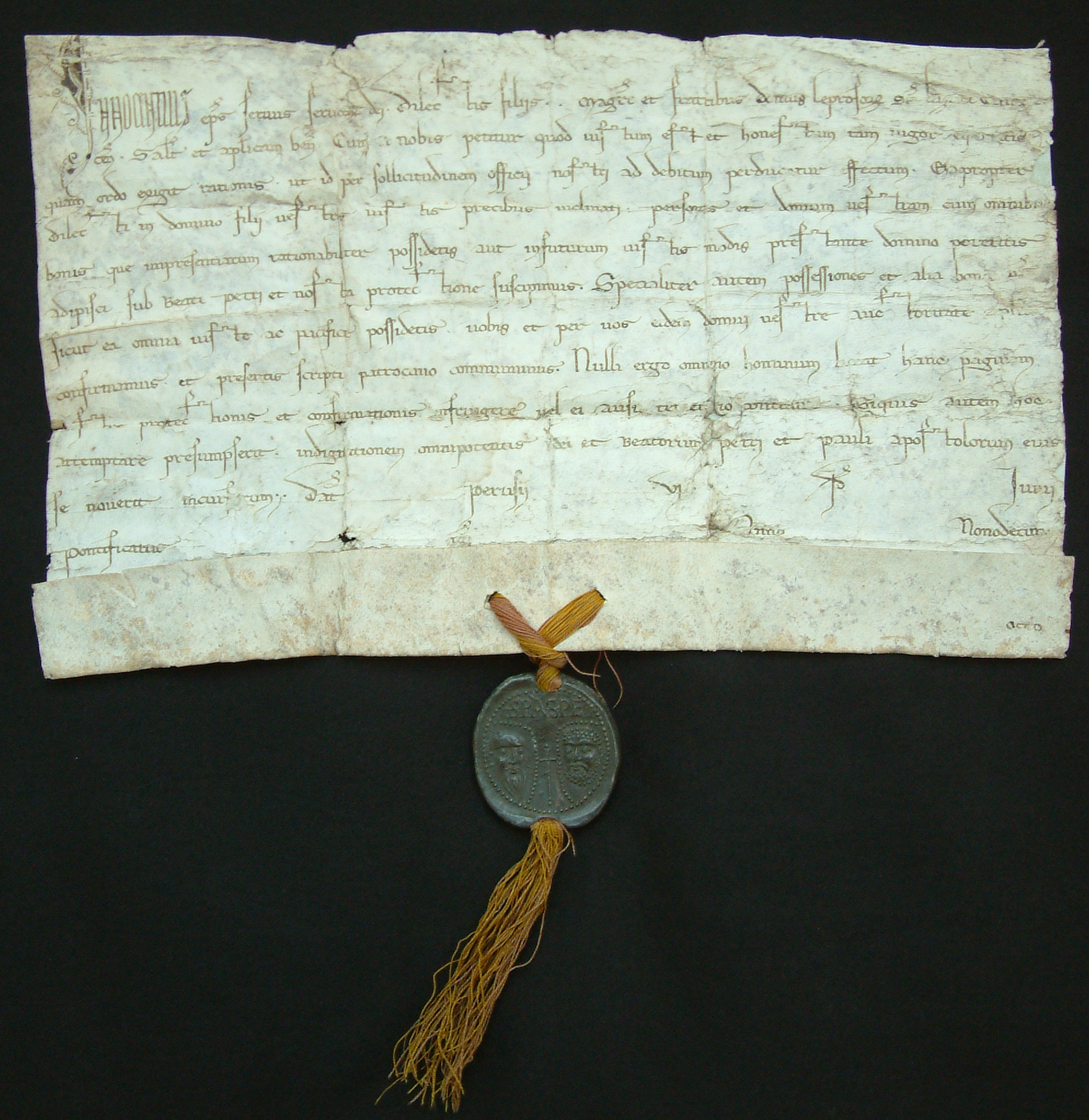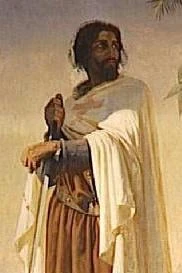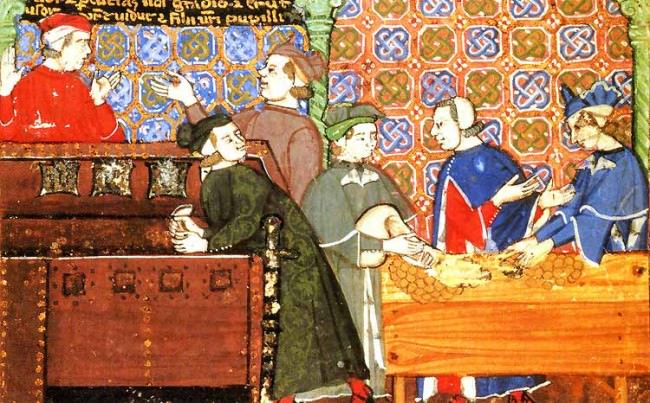Pre-crusade Muslim religious tolerance to pilgrims in the Holy Land
Depicting Saracens in the Middle Ages: sometimes more than monsters
A six phase origin of the Order of the Temple
In his paper The first Templar Knight (part 2), the origin of the Temple, Josè Maria Fernandez Nùñez proposes a six phase development period of the premordial Order of the Temple, from 1104 to 1120.
"The first history of the Brotherhood is known as the time that occurs between the Synod of Nablus until the Council of Troyes, where the Order is definitely created, but...what about before? Before this period that covers from 1104 through 1120...what occurs during this period? ...
Some 16 years had transpired that would encompass the novitiate, the temporal acknowledgment; the creation of the Brotherhood or congregation in the aforementioned Synod. It can be stratified in six different periods.
Diversity and multiculturalism in the medieval world - theory and practise
"The concepts of diversity and multiculturalism seem, in many respects, to be associated with modernity. However, linguistic and religious diversity were facts of everyday life throughout the medieval world. And—very much like today—diversity had its share of proponents and its discontents.
Racial changes in depicting Saracens in the Middle Ages
"How were Saracens depicted from 1200-1420, and what can this tell modern scholars about the way that western artists and audiences viewed and depicted Saracens?
The great work of Dr Bernadus Theodoor (Ben) Brus - 1917 - 2016
In 2017 I found out that Dr Brus passed away in 2016, only a year before his one hundredth birthday, which would have been Saterday, September 30th.
I had the honour to be in contact with Dr Brus for my own research several times. His work, summarized on his website and visually quoted on Templars Now, is the cornerstone of Templar research in The Netherlands and will remain so for many years to come. With great respect I acknowledge his work and vow to continue it as much as I can in my own way.
In 2019 I met with the family of Dr Brus. We agreed that TemplarsNow will continue the work of Dr Brus in a modest way. First step is by simply re-plublishing in English parts of his work on certain and probable sites on TemplarsNow channels. Later on TemplarsNow intends to undertake additional research on Templar sites in the Netherlands indicated by Dr Brus as probable and possible. All this will be done in honor of Dr Brus' monumental work.
Rest in Peace, Dr Ben Brus.
Financing the Crusades - general taxation
"A "first crude experiment" in compulsory almsgiving, the levy of 1166 begins the history of general taxation for financing the crusades.
People behind the Knights Templar
Usually the Knights Templar are referred to as if it was a a coherent body. This may have been the case in their later days. But in their early days, when the concept of knight-monks and the organisation were as such new, it seems more likely that they were a on-coherent group of individuals of different origins, mainly coming from early 12th century Francia.
Depictions of the Military Orders’ Martyrs in the Holy Land
"The military religious orders were founded to fight on behalf of their fellow Christians, in defence of pilgrims and Christian territory. They fought alongside and supported the crusaders in the Holy Land. (...) In an era in which warriors who died fighting non-Christians were increasingly depicted as martyrs, it is not surprising that writers of the 1120s and 1130s associated the first knight-brothers with martyrdom. But as the Franks of the Holy Land met with division and defeat, how far did this imagery continue? Did outsiders continue to depict the brothers of the military orders in this way?
The founding of a Cistercian abbey, a good investment
"The founding of a Cistercian abbey was a comparatively cheap investment, in comparison to other monastic orders. The patrons, while seeking the spiritual rewards from charity, were also looking to develop their land. The Cistercians ventured into the wilderness to seek self sufficiency, a Cistercian abbey depended on cultivating a great expanses of wasteland, woodland and marshland.
Financing the crusades - the role of the military orders
The orders formed permanent corps of crusaders stationed in the east with reserves in Europe. Each created an elaborate organization with houses of various ranks throughout Europe as well as Outremer. In the west these houses acted as recruiting stations and managed the resources of the orders locally. Early in the thirteenth century James of Vitry wrote of the orders, "They have been prodigiously increased by vast possessions both on this side of and beyond the sea, for they own villages, cities and towns.
The records more than bear out his statement. Each house of the orders, as James went on to say, sent "a certain sum every year for the defense of the Holy Land to their grand master", whose seat was in the east. The sum sent by preceptories of the Hospital seems normally to have been a third of their revenues, paid twice a year before the regular spring and autumn passages to the east. The financial organization of the orders not only supplied their own needs, but also permitted them, especially the Templars, to act as bankers for the crusades. Their part in the collection of the general taxes of 1185 and 1188 has already been noted, and they also received clerical taxes in 1201 and 1215.
Their regular passages offered facilities for other crusaders to resupply themselves. Deposits with houses in the west could be withdrawn in the east, and money could also be borrowed from them in the Holy Land to be repaid in Europe. They preferred to deal in coin and apparently did not develop credit operations beyond transfers. Yet they remained the crusade bankers par excellence, serving the papacy and princes as well as lesser men, while their own resources gave them a prime place in the defense of the Holy Land"
Blog quotes from Zacour, N. P.; Hazard, H. W. (ed.) / The impact of the Crusades on Europe (1989), Chapter IV, "Financing the Crusades". The quotes presented here focus on the situation in the first half of the 12th Century. Illustration coins Knights Templar France. Philip IV Le Bel, 1268-1314 AD; source
How many Templars were there?
Is this a reasonable figure? (...) the estimated figure of 1,300 Templars in the East in the 1180s is too large. Perhaps there were only 300 brothers in total, in the whole of the East; that would mean that numbers more than halved between the 1180s and the early fourteenth century, but that would be reasonable after the losses of 1291-1302.
That is only the East: how many Templars were there overall? ... so far this suggests that there were no more than 1,500 Templars in Europe and Cyprus in 1307."
Text and illustration mainly from the blog by "Gawain's Mum" on gawainsmum.wordpress.com. Illustration shows Four Templar knights on the tomb of Don Felipe in the former Templar church of Santa Maria la Blanca de Villasirga, at Villacazar de irga (Palencia, Castile, Spain). Photo: Juan Fuguet Sans
Setting the stage for the Crusades - role of the Church
Setting the stage for the Crusades - daily life
"The sixth century marked the beginning of the Dark Ages in western Europe. While the Byzantine Empire generally prospered, despite its loss of territory, western Europe spent the six centuries after the death of Justinian in chaos, war, cultural degeneration, superstition, ignorance, and poverty. A harsh setting.
"An Analysis of Prophet Muhammad’s Covenants with Christians"
"examines the roles that religious pluralism and civic rights played in Prophet Muhammad’s vision of a “Muslim nation”.
He demonstrates how Muhammad desired a pluralistic society in which citizenship and equal rights were granted to all people regardless of religious beliefs and practices. The Covenants of the Prophet Muhammad with the Christians of his time are used as a framework for analysis. These documents have received little attention in our time, but their messages are crucial in light of current debates about Muslim-Christian relations.
The article campaigns for reviving the egalitarian spirit of the Covenants by refocusing our understanding of the ummah as a site for religious freedom and civil rights. Ultimately, Considine argues that the Covenants of Prophet Muhammad with the Christians of his time can be used to develop a stronger narrative of democratic partnership between Muslims and Christians in the “Islamic world” and beyond."
This blog contains the (slightly edited) entire Introduction to the following paper: Considine, C. Religious Pluralism and Civic Rights in a “Muslim Nation”: An Analysis of Prophet Muhammad’s Covenants with Christians. Religions 2016, 7, 1, which can be found at www.mdpi.com. Illustration: A Christian and a Muslim playing chess, illustration from the Book of Games of Alfonso X (c. 1285; from wikipedia.org
Financing the Crusades - Papal support
Financing the military orders in medieval times
As early as 1101 pope Paschal II joined with the patriarch of Jerusalem, Daimbert of Pisa, in offering an indefinite remission of penance to those who gave aid to the Hospital. Innocent II in 1131 promised remission of one seventh of enjoined penance to those who gave of their goods to the Hospital, and the same privilege was soon extended to the Temple.
Confraternities also received indulgences and could pass on some of their rewards to those who supported them. Great gifts as well as innumerable small ones were made: in 1134 Alfonso I of Aragon bequeathed a third of his kingdom to the two military orders and the Holy Sepulcher; Bela of Hungary, Byzantine heir-apparent and "duke", in 1163—1169 gave 10,000 gold bezants to the Hospital; and Henry II of England sent 30,000 marks sterling to the Templars and the Hospitallers for the defense of Tyre in 1188. Until the Third Crusade the Hospital and the Temple were the usual recipients of alms and legacies for the Holy Land."
Blog quotes from Zacour, N. P.; Hazard, H. W. (ed.) / The impact of the Crusades on Europe (1989), Chapter IV, "Financing the Crusades". The quotes presented here focus on the situation in the first half of the 12th Century. Illustration coins Knights Templar France. Philip IV Le Bel, 1268-1314 AD; source; illustration source.
Financing the Crusades - the "lesser men" and their partnerships
"The communal organization of the "lesser men", the middle classes, revealed itself in their crusades, which took now the character of a huge partnership, now that of a trading company, and now that of a state enterprise.
March 18, 2017, the 703rd anniversary death of Jacques de Molay
Though little is known of his actual life and deeds except for his last years as Grand Master, he is the best known Templar, along with the Order's founder and first Grand Master, Hugues de Payens (1070–1136). Jacques de Molay's goal as Grand Master was to reform the Order, and adjust it to the situation in the Holy Land during the waning days of the Crusades.
| Death-site plaque of Jaques de Molay on Isle des Juifs, Paris |
source text and illustrations wikipedia.org
Financing the Crusades - mortgages, loans and gifts
The life of Hughes Count of Champagne summarized
Born around 1074, Hughes was the third son of Thibaud I and Adèle of Valois. In 1089, his half-brother Etienne-Henri succeeded Thibaud I as the head of the Counties of Blois and Meaux. Four years later, on 1 January 1093, Hugh inherited his other brother's Eudes IV Counties of Troyes, Vitry and Bar-sur-Aube. Hughes in 1102 was the first to officially take the title of Count of Champagne. He also was the first to settle in Troyes. Hughes was to play an important role in Templar history.
"The Order of the Temple included women"
"The Order of the Temple included women. Within the first years of its existence many women took the Order’s oath, although they remained members of the lay persons’ Temple.
,%20Bodleian%20Library,%20Oxford.png)



.jpg)












